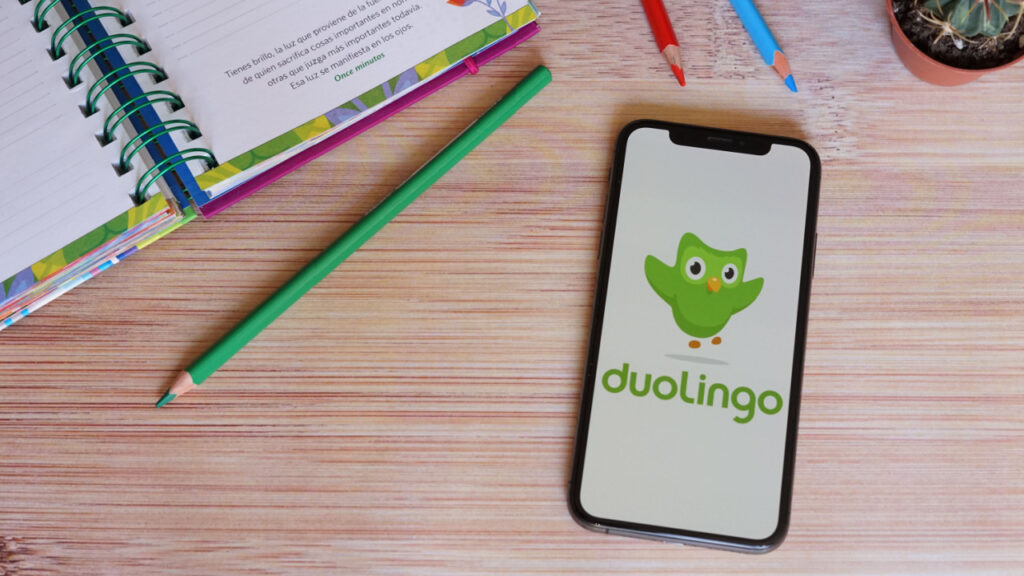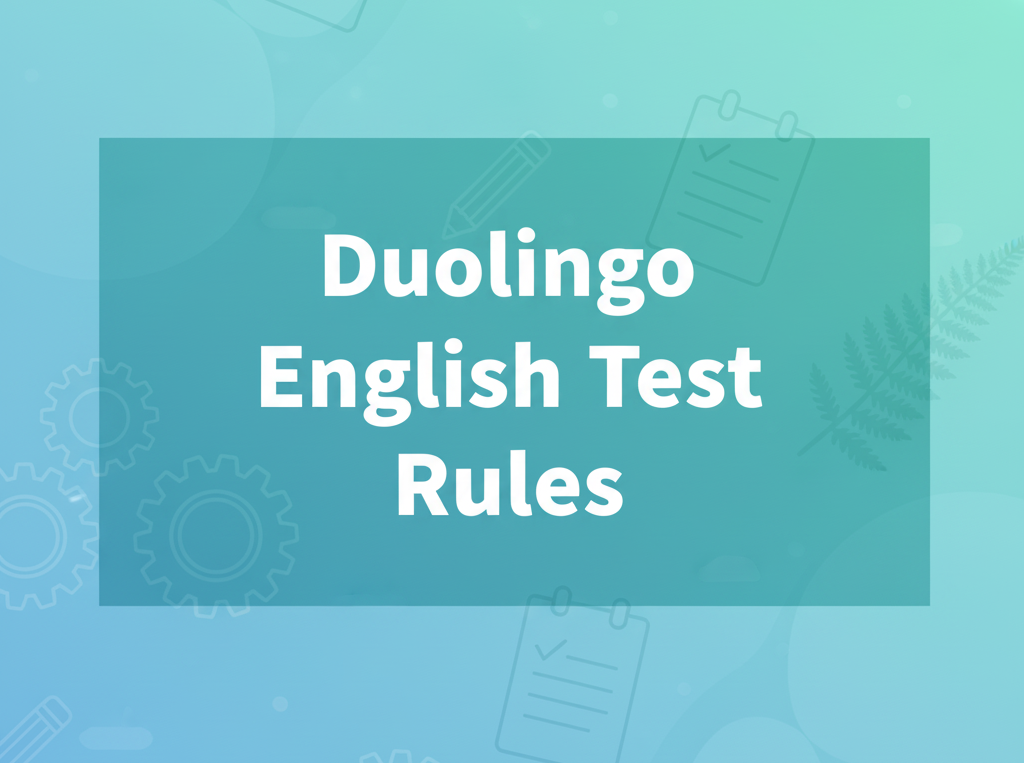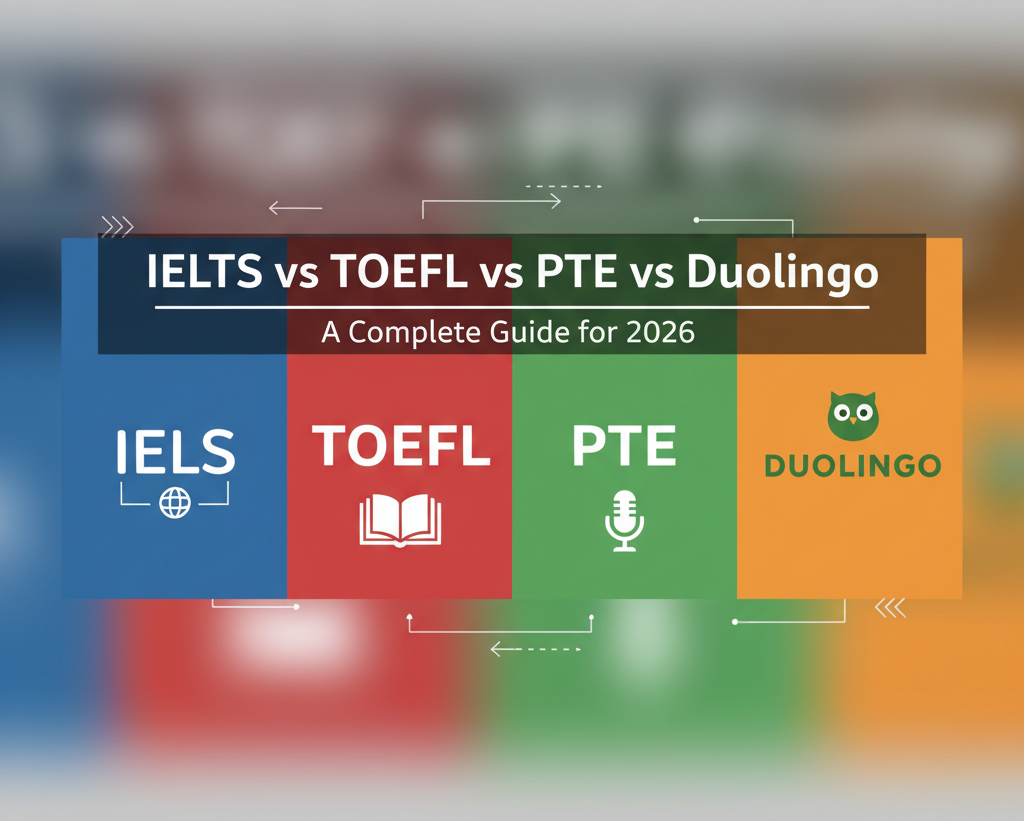What does your ability to describe a simple picture say about your English skills? In the Duolingo picture description task, that single skill can make a major difference in your overall test score. You will be asked to describe an image briefly and accurately, either by speaking or writing, to show how well you can observe and express ideas in English.
This task is a key part of the Duolingo English Test and directly affects your Production and Conversation scores. These two areas are used by universities to judge if you can communicate clearly in academic settings.
Many students find this task challenging because it tests both language and quick thinking. Duolingo’s 2025 report shows that those who practise structured picture descriptions perform 10 to 15 points better on average. This guide explains how the task works, what scorers look for, and how to create strong, high-scoring answers for the 2026 test.
What is Duolingo Picture Description Task?
The Duolingo picture description task is a core part of the test that measures how well you can describe what you see in English. You will be shown an image and asked to describe an image in Duolingo either by writing or speaking. This task checks your ability to observe details, use correct grammar, and build clear sentences under time pressure.
Choose your dream country
When do you want to study abroad?
What's your highest level of education?
Select you current city
How Leap will help you
Personalised University Shortlist
Express Applications with Quicker Admits
End-to-End Application Support
Write About the Photo
- Appears in the adaptive writing section.
- Write 40–60 words describing an image.
- Tests grammar, vocabulary, and sentence structure.
- You have 60 seconds to complete the task.
Practising with a Duolingo image description example helps improve speed and accuracy.
Speak About the Photo
- Appears in the speaking section.
- You have 30–90 seconds to describe the image aloud.
- Tests pronunciation, fluency, and coherence.
Regular Duolingo image description practice or reviewing Duolingo image description questions and answers helps improve confidence.
Scoring and Purpose
Both tasks contribute to your literacy, production, and conversation scores. The test uses AI-based evaluation to measure how clearly you describe the image and organise your ideas. Regular practice with Duolingo English Test picture description sample images helps you respond quickly and meet the fluency level that universities expect.
Many US universities now recognize the Duolingo English Test as proof of proficiency. If you're planning to apply for 2026 intakes, you can check the list of Duolingo accepted universities in the USA to find institutions that match your scores and program preferences.
Top Strategies for High-Scoring Descriptions
Strong picture descriptions require structure, clarity, and effective use of time. Here are Duolingo picture task strategies:
1. Use the 5Ws Framework
- Focus on Who, What, Where, When, and Why.
- Example: A teacher is explaining a lesson to students in a classroom during the day.
- This structure helps you describe an image in Duolingo in a logical and complete way.
2. Start with the Main Action
- Identify the central activity first, then move to supporting details.
- Example: A woman is painting a wall while others watch her work.
- This gives your Duolingo English Test picture description a clear focus and direction.
3. Describe Foreground and Background
- Begin with what is closest to the viewer, then describe what is behind.
- Example: In the foreground, two people are talking, while in the background, others are working on computers.
- This approach improves observation and structure in your Duolingo image description response.
4. Use Descriptive and Academic Vocabulary
- Replace simple words with more specific terms.
- Example: busy → crowded, happy → cheerful, nice → pleasant.
- Expanding your vocabulary through Duolingo image description practice can raise your score.
5. Keep Sentences Clear and Varied
- Use both short and complex sentences.
- Avoid long, unclear statements.
- Example: The park looks peaceful. Families are sitting on the grass enjoying the weather.
6. Manage Time Effectively
- Spend 5 seconds observing, 50 seconds describing, and 5 seconds reviewing.
- This keeps your response focused and complete within the given time.
7. Practise with Real Images
- Use Duolingo English Test picture description sample images or news photos for regular practice.
- Record yourself, review your fluency, and identify areas for improvement.
- Analysing Duolingo image description questions and answers builds familiarity and confidence.
Consistent use of these strategies improves accuracy, fluency, and vocabulary range, the three key elements that define a high-scoring picture description in the 2026 Duolingo English Test.
Advanced Vocabulary and Sentence Structures for Duolingo Picture Description 2026
Using accurate and varied vocabulary is one of the easiest ways to improve your score in the Duolingo picture description task. The goal is to describe what you see using precise, natural English. Strong vocabulary helps you sound confident and fluent while avoiding repetition.
1. Vocabulary Bank: Simple vs Advanced Words
| Simple Word | Advanced Alternative | Example Sentence |
|---|---|---|
| good | impressive | The building looks impressive with glass walls. |
| beautiful | picturesque | The picturesque view shows mountains and lakes. |
| busy | crowded | The crowded street is full of people shopping. |
| happy | cheerful | The children look cheerful as they play. |
| big | enormous | An enormous ship is sailing in the harbour. |
| clean | spotless | The spotless kitchen looks well organised. |
| old | ancient | The ancient building has tall stone pillars. |
Practising these pairs during your Duolingo image description practice sessions helps improve your range and accuracy. Learning more from the 15 Vocabulary Terms to Raise Your Duolingo English Test Score can help you sound more fluent and precise during the test.
2. Sentence Patterns for Writing and Speaking
For Writing Tasks
- The image shows…
- In the picture, there is/are…
- It seems that…
- The scene appears to be…
- In the background, we can see…
For Speaking Tasks
- I can see that…
- It looks like…
- There seems to be…
- The people are probably…
- I think they might be…
These simple structures make it easier to describe an image in Duolingo clearly without hesitation.
3. Vocabulary by Common 2026 Topics
a. Campus Life – lecture, assignment, discussion, presentation
b. Environment – pollution, greenery, climate, wildlife
c. Technology – device, innovation, digital, research
d. Social Interaction – community, teamwork, celebration, event
e. Workplaces – meeting, project, construction, office setup
Students who review Duolingo image description questions and answers regularly can identify patterns in topics and prepare targeted vocabulary for each.
4. Tips for Sentence Flow
- Combine two short ideas using “and,” “while,” or “because.”
- Avoid repeating the same structure in every sentence.
- Read your sentences aloud during Duolingo English Test picture description practice to check fluency and rhythm.
Using precise words and balanced sentences can make your Duolingo image description example stand out as well-organised and fluent. For additional speaking guidance, explore Duolingo Speaking Topics with Answers.
Picture Description Examples with High-Scoring Answers
For additional speaking guidance, explore Duolingo Speaking Topics with Answers.
Example Set 1 – Everyday Scenarios

Question: A woman shopping at an outdoor market.
Response: “The image shows a woman browsing a fruit stall at an outdoor market. She is wearing a blue dress and carrying a brown tote bag. The vendor is handing her a bunch of bananas. Behind them, other shoppers are exploring different stalls under colourful umbrellas.”
Example Set 2 – Outdoor Scenes & Landscapes

Prompt: A family having a picnic in a park.
Response: “A family sits on a red blanket in a green park. The parents are unpacking food while the children play with a frisbee. The background features tall trees, clear skies, and other families enjoying their time outdoors.”
Example Set 3 – People & Social Interactions
Prompt: A group of students discussing in a classroom.

Response: “The photo shows four students seated around a table in a classroom. They are engaged in a discussion, with one person holding a textbook. A whiteboard in the background displays notes. The students appear focused and interested in their conversation.”
For more information on test acceptance, check Duolingo Accepted Universities in Australia and Duolingo Accepted Countries and Universities.
Common Mistakes That Lower Your Duolingo Picture Description Score
Many students lose easy marks in the Duolingo picture description task because of avoidable mistakes. Understanding these errors is the first step to improving your score. The test evaluates accuracy, fluency, and relevance, so even small lapses can reduce your overall band.
1. Listing Objects Without Context
- Simply naming what you see is not enough.
- Instead of saying “There is a man and a dog”, explain the action: “A man is walking his dog in a park.”
- This shows that you can describe and interpret visuals clearly, which improves your Duolingo image description score.
2. Ignoring Background Details
- Strong responses describe the full picture, not just the main subject.
- Mentioning background elements shows observation and organisation.
- Practising with Duolingo English Test picture description sample images can help you develop this skill.
3. Using Weak or Repetitive Vocabulary
- Words like good, nice, or beautiful are too basic.
- Use varied, precise terms such as crowded, peaceful, or modern to improve your Duolingo image description practice results.
4. Making Grammar or Spelling Errors
- Small mistakes in articles, verb tense, or word order can affect your Literacy and Production scores.
- Reviewing short Duolingo image description examples helps you notice and correct such errors.
5. Adding Irrelevant Information
- Avoid guessing or creating stories not visible in the image.
- Irrelevant content lowers accuracy and coherence scores.
- Focus on what is clearly shown when you describe an image in Duolingo.
Avoiding these mistakes can help you produce more focused and accurate responses, leading to higher marks in both writing and speaking sections.
Duolingo Picture Description Practice Tips and Study Resources
Regular practice is the most effective way to improve your performance in the Duolingo picture description task. It builds fluency, accuracy, and confidence in both speaking and writing.
1. Record and Review
Record your responses to check fluency and grammar. Focus on how clearly you describe an image in Duolingo and correct repeated mistakes.
2. Practise with Real Images
Use photos from news sites or Duolingo English Test picture description sample images. Try describing people, places, and daily activities to improve observation skills.
3. Time Your Practice
Set a timer for 60 seconds for writing and 90 seconds for speaking. This helps you stay focused and complete your answer on time.
4. Get Feedback
Ask teachers or peers to review your Duolingo image description practice tasks. Feedback helps identify weak grammar or unclear phrasing.
5. Use Trusted Tools
Practise using the official Duolingo mock test and reliable platforms like Magoosh or E2 Test Prep. Reviewing Duolingo image description questions and answers improves your understanding of scoring patterns.
Conclusion
The Duolingo picture description task tests how well you can observe, think, and express ideas in English. Clear structure, accurate grammar, and good vocabulary can help you achieve a higher score.
Regular Duolingo image description practice using real images and timed sessions builds fluency and confidence. Students who practise consistently tend to perform better and meet university score requirements.
LeapScholar can help you prepare with expert guidance and reliable study support for the 2026 Duolingo English Test.
Frequently Asked Questions (FAQs)
-
What kind of pictures are used in the Duolingo English Test picture description task?
The Duolingo picture description task uses simple and clear images that show daily life scenes, objects, or activities. These pictures are often illustrations or photos without text. The goal is to test how naturally you can describe visible details in English.
-
How to describe time in Duolingo picture description?
Look for visual clues like lighting, shadows, or the environment. Use short phrases such as in the morning, during the afternoon, or at night.
Example: The picture seems to be taken in the evening as the sky is darker.
If time is unclear, use neutral phrases like at that moment or in the scene. -
Can I describe things that are not shown in the Duolingo image description?
No. Focus only on what you can see in the image. Avoid guessing or adding extra details. The Duolingo image description task checks observation and accuracy, so describing what’s visible helps you score higher.
-
How much should I write or speak in the Duolingo picture description task?
Write about 40–60 words or speak for 30–60 seconds. Keep your response short, organised, and relevant. Quality and clarity matter more than length when you describe an image in Duolingo.
-
Is grammar and spelling checked by AI in the Duolingo image description?
Yes. The Duolingo English Test uses AI to evaluate grammar, spelling, fluency, and vocabulary. Minor mistakes do not affect your score much, but repeated or serious errors can reduce your Literacy and Production scores.
-
Do I need to use advanced vocabulary in Duolingo picture description?
Not necessarily. Use words that fit the image and sound natural. Clear, accurate vocabulary is better than complex or unfamiliar words.
Example: The park looks peaceful is better than forcing uncommon terms. -
Can I pause while speaking in the Duolingo image description task?
Yes, short pauses are fine. They help you think and sound natural. However, long or repeated pauses can affect your fluency score. Try to speak steadily and avoid long silences.
-
What happens if I make small grammar mistakes in Duolingo picture description?
Small grammar slips are acceptable if your meaning is clear. Focus on correct sentence structure and natural flow. Consistent or serious grammar errors may lower your Production score.
-
Should I describe the whole image or focus on one part in Duolingo picture description?
Start by describing the full image briefly, then focus on the main subject or action. This shows observation and organisation. Avoid listing every detail; choose the most important ones to make your description meaningful.
















Have Questions? Get Guidance to reach your Dream University
Connect with India's finest counsellors and biggest study abroad community.
Get Guidance